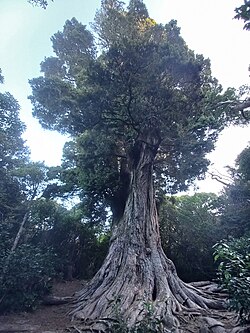| Chrysorthenches porphyritis | |
|---|---|
 | |
| Scientific classification | |
| Domain: | Eukaryota |
| Kingdom: | Animalia |
| Phylum: | Arthropoda |
| Class: | Insecta |
| Order: | Lepidoptera |
| Family: | Plutellidae |
| Genus: | Chrysorthenches |
| Species: | C. porphyritis |
| Binomial name | |
| Chrysorthenches porphyritis | |
| Synonyms [2] | |
| |
Chrysorthenches porphyritis is a species of moth in the family Plutellidae. [3] It was first described by Edward Meyrick in 1885 and is endemic to New Zealand. This species is found on both the North and South Islands in open native forests and scrubs at altitudes ranging from sea level to 1370 m. The larvae feed on Podocarpus laetus , P. totara , P. nivalis , and Phyllocladus alpinus . The larvae create shelters by loosely spinning together the leaves of their host plants and can be found feeding in groups. The pupa develops inside a thin cocoon. Hudson believed this species had two broods a year. Adult moths are active throughout the year. The adults of this species, particularly the females, exhibit variability in coloration and forewing patterns.




